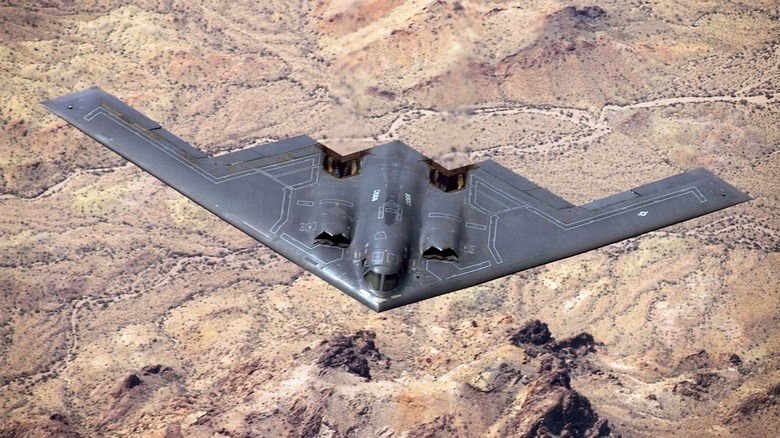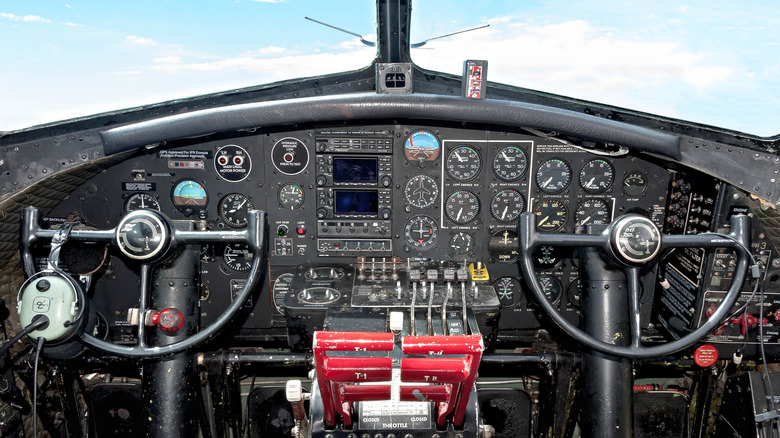How Big Is The Crew On A B-2 Bomber?
When it was first introduced in 1988, the B-2 Spirit was a game changer. It was and remains one of the most advanced strategic bombers ever produced, although its successor, the B-21 Raider, will significantly outperform it when it replaces the B-2 sometime in the mid-2020s. The B-2 has participated in every major U.S. military engagement around the world, including its first combat deployment during Operation Allied Force in 1999.
B-2s flew from Whiteman Air Force Base, Missouri, to Kosovo and back, bombing Serbian targets. That's a journey of more than 5,000 miles one-way, and it's since flown further. B-2s flew from their home base to Afghanistan and back during Operation Enduring Freedom, covering a distance of more than 7,000 miles one-way. Granted, it needs aerial refueling for such missions, as the B-2 can fly just under 7,000 miles on a single tank. You might think that a flight of that distance would require a large crew, but only two people serve aboard the B-2. Both are pilots.
One flies the plane, while the other one serves as the mission commander, who also operates the aircraft. That's difficult to wrap your head around because just two pilots are entrusted with the B-2, which costs $2 billion per aircraft (not to mention fuel, ordnance, training, and other costs), to deliver its payload. Regardless, only two people are required, making the B-2 vastly different from other U.S. strategic bombers, past and present.
How the B-2 Bomber's crew compares to older bombers
While the B-2 Spirit requires only two people, the B-52, which is used more frequently and has a longer operational history, requires five. These include the aircraft commander, co-pilot, navigator, radar navigator, and electronic warfare officer. The B-52 Stratofortress is one of the Air Force's most storied aircraft, having flown the unfriendly skies for over 70 years. Still, it's hardly the only bomber the U.S. has or has used in combat, and none of them match the crew requirements of the B-2.
The B-1B Lancer has a crew of four personnel: an aircraft commander, a co-pilot, and two weapons systems officers. The retired B-17 Flying Fortress, which played a crucial role in helping the Allies defeat the Nazis during World War II, had a crew of ten: a pilot, co-pilot, navigator, and multiple gunners who also operated the radio and other vital equipment. The B-29 Superfortress, like the Enola Gay, which dropped the atomic bomb on Hiroshima, had a similar crew, though it required an additional man.
As time marches on, bomber crews are becoming smaller, and the B-21, the world's first sixth-generation aircraft, will mirror the B-2 with only two personnel onboard. That said, the aircraft will be capable of autonomous operation, meaning that, for the first time in history, a strategic bomber will be able to operate without an onboard crew. Of course, someone on the ground will be required to operate the aircraft, but it's unclear as of this writing how many people will be involved.

